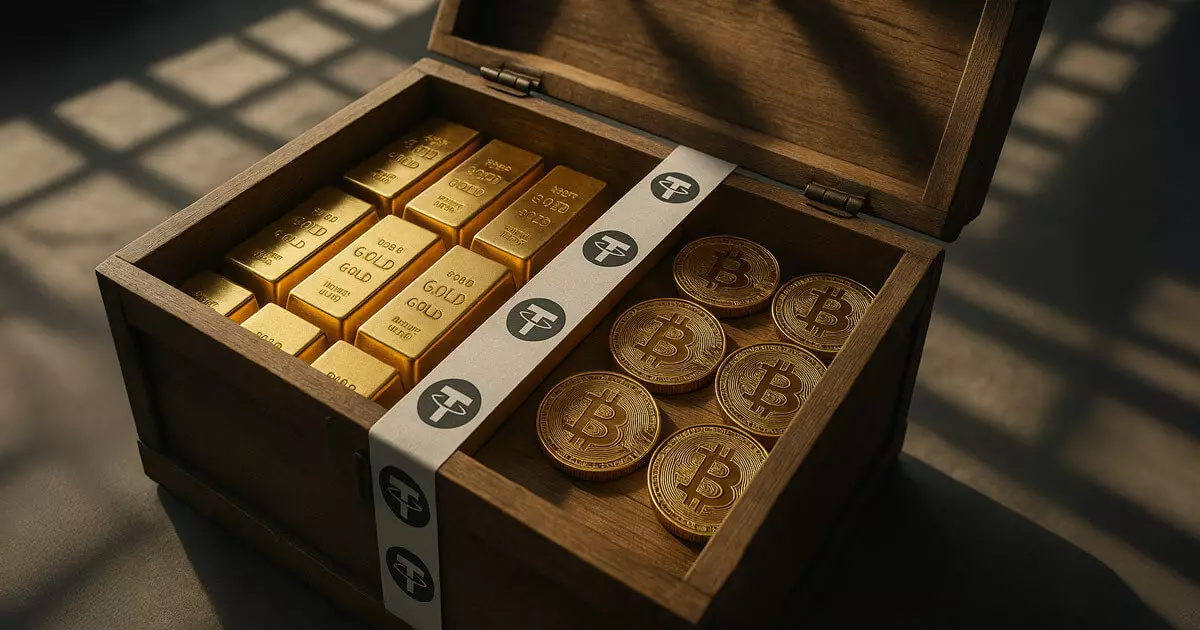In an era where digital currencies dominate financial headlines, Tether’s recent revelation about holding $8 billion worth of gold reveals a deliberate attempt to blend traditional asset security with innovative blockchain solutions. Unlike many crypto firms that rely solely on fiat-backed reserves or risky derivatives, Tether is positioning itself uniquely by securing a significant portion of its backing in physical gold stored in a fortified Swiss vault. This strategic diversification isn’t just a show of strength; it signals a readiness to adapt to shifting market sentiments and regulatory pressures. The firm’s claim that nearly all of this gold is owned outright demonstrates a confidence that goes beyond mere collateral—it’s an assertion of stability rooted in tangible assets.
What stands out is Tether’s approach to maintaining low-cost backing by self-custody of bullion, sidestepping exorbitant fees tied to commercial vaults. This move indicates a fundamental understanding that stability, even in an increasingly volatile economic environment, requires owning real, physical assets rather than relying solely on digital fiat reserves. As the global economic landscape becomes more uncertain—especially with rising geopolitical tensions—such an approach could give Tether an edge, appealing to investors seeking refuge in stable, tangible assets without the risk of bank deposit insolvencies or political interference.
Regulatory Crossroads: Challenges and Opportunities
Despite the clear strategic advantages, Tether’s gold reserves face a looming threat from regulatory frameworks emerging across the Atlantic. Legislative efforts like the U.S. GENIUS Act and Europe’s MiCA regulations restrict stablecoin collateralization to cash and cash equivalents, purposefully excluding commodities like gold from their approved asset pools. If these laws come into full effect, Tether could be forced to liquidate its physical gold holdings to comply, threatening to undermine the very foundation of its reserve backing.
However, there’s a nuanced aspect here: Tether’s gold-backed token, XAUT, offers a pathway to retain some exposure. By holding gold directly tied to this token rather than the broader USDT issuance, the company retains the option of backing a limited amount of its stablecoin denomination with physical assets. Nevertheless, this selective flexibility might not be enough to satisfy regulatory demands for stability and liquidity. The firm’s ability to navigate these rules will largely depend on negotiations with regulators and whether they recognize gold as a permissible form of collateral.
The Geopolitical and Economic Implications
Tether’s calculated embrace of gold as a reserve component echoes a broader geopolitical narrative. The uptick in gold prices, driven by central bank buying among BRICS nations and investor fears of U.S. fiscal irresponsibility, underscores a global shift towards tangible assets as a hedge against economic volatility. Tether’s strategic backing with gold isn’t just about accounting; it’s a bold statement on the future of stablecoins amid rising inflation and potential dollar devaluation.
Furthermore, by holding physical gold, Tether positions itself as a currency of last resort—an on-chain refuge free from the vulnerabilities of traditional banking systems. This stance might appeal to a center-right audience that values economic stability, prudent asset management, and the preservation of value amidst uncertain political and economic climates. While regulators may view this move with skepticism, the market’s appetite for secure, tangible assets in digital form is only likely to grow if trust in fiat currencies continues to waver.
Ultimately, Tether’s gold holdings symbolize a flexible yet ambitious bid for stability—an attempt to marry traditional asset security with the innovative potential of blockchain. Whether regulators will recognize this strategy as a strength or a risk remains to be seen, but it undeniably puts Tether at the cutting edge of a new frontier where physical assets and digital currency intersect.














